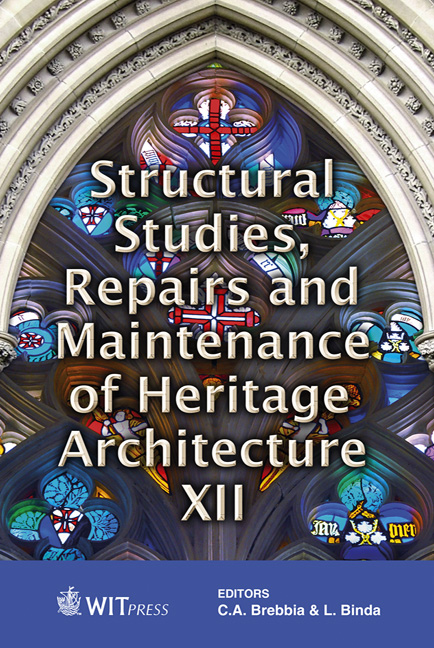Polonceau Versus Ardant: Efficiency Versus Aesthetics?
Price
Free (open access)
Transaction
Volume
118
Pages
13
Page Range
319 - 331
Published
2011
Size
2,800 kb
Paper DOI
10.2495/STR110271
Copyright
WIT Press
Author(s)
M. de Bouw & I. Wouters
Abstract
In 1839 engineer Camille Polonceau invents the Polonceau truss. However, for a long time architects refuse to openly show iron structures in public buildings and constructions for aesthetical reasons. In spite of this, engineers acknowledged the ample structural opportunities of iron roofs, which urged them to experiment with curved trusses in order to avoid the industrial looking bar roof trusses. Nevertheless, today one knows the Polonceau truss, whereas few are familiar with its aesthetical counterpart: the Ardant truss. This curved roof truss makes use of an inscribed arch, tangent and framed to the principal rafters of a gable roof, in order to rigidify the roof structure and avoid interfering tension ties. According to the spirit of age, this solution with its high decorative potential seemed to provide a satisfying answer to both the aesthetical as well as the structural problems of iron roof trusses in public edifices. Subsequently, it was applied many times in swimming pools, stock exchange buildings, schools, platform coverings, palaces, malls, etc. In Belgium it was widely used to span the central covered courtyard of the Brussels model schools which were built between 1875 and 1920, and which were very innovative with regard to architecture, educational policy, hygiene, heating and ventilation techniques, safety, etc. This paper deals with the debate on the efficiency and aesthetics of iron architecture in the 19th and 20th century, by means of a structural analysis of the iron Polonceau and Ardant roof trusses of the Brussels model schools. The paper
Keywords
Polonceau roof truss, Ardant roof truss, curved roof truss, structural analysis, structural iron, model school, Brussels, efficiency, aesthetics




